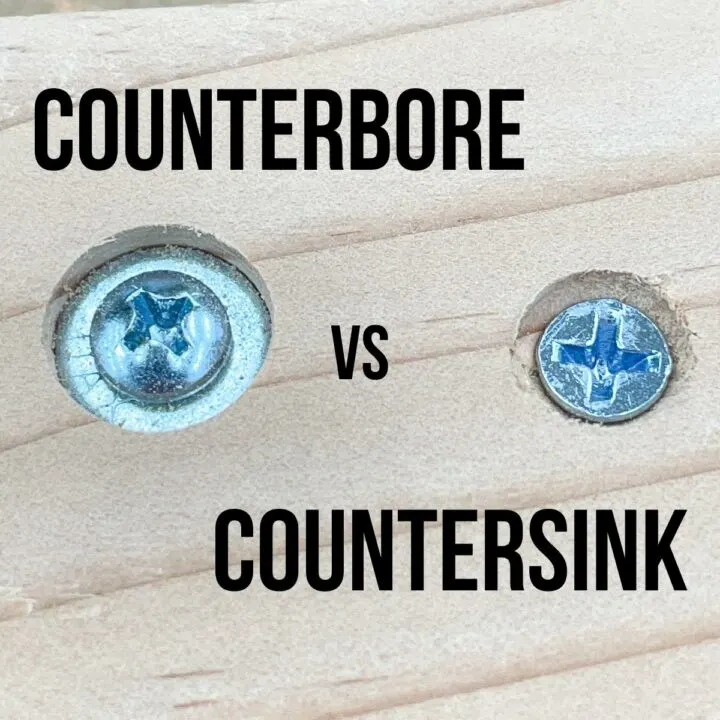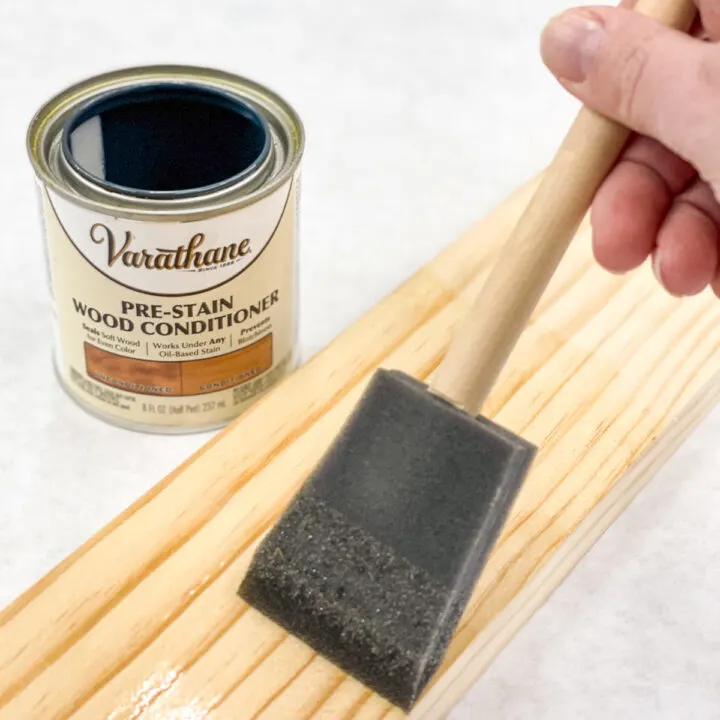Pocket holes make building furniture easy, but those big holes are so ugly! Learn how to fill pocket holes 7 different ways to hide them!

Pocket holes made by a Kreg Jig or similar tools are great for beginning woodworkers. But they have one nemesis - the tunnels they leave behind!
You can fill pocket holes with a variety of methods, from wood filler to Bondo to special plugs. The best choice for your project depends on your finish, desired speed, and the materials you're using.
Luckily, you might already have everything you need in your workshop! Learning how to hide pocket holes will take a good joint and make it even better! Many of these techniques can also be used to hide screws in wood elsewhere on your project too!
This post contains affiliate links for your convenience. Purchases made through these links may earn me a small commission at no additional cost to you. Please visit my disclosures page for more information.
Overview of Pocket Hole Joints
Pocket hole joinery is a clever technique that drills a hole in the board at an angle to accommodate a special wood screw. It requires a pocket hole drill bit to create this hole properly.
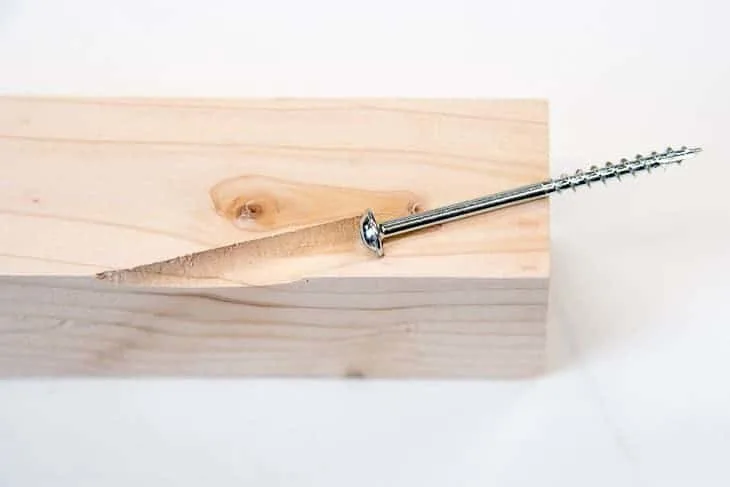
Many people use the Kreg jig, but there are other companies like Milescraft and Armorwith similar products. No matter which one you use, it will always leave a big hole behind! Sometimes you can position them where no one will see them, but other times you need to hide them.
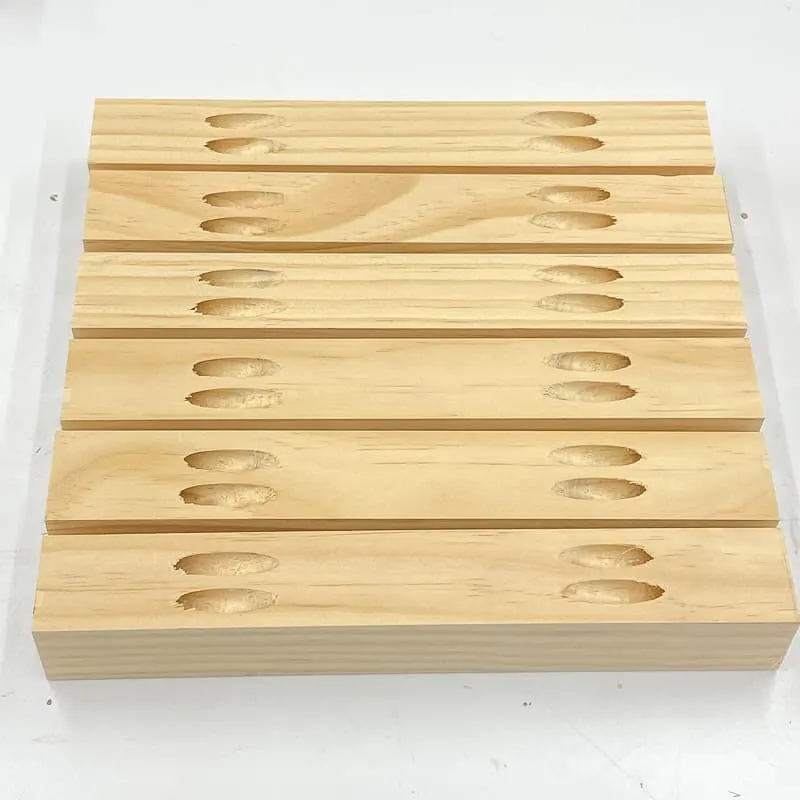
Seven Ways to Fill Pocket Holes
There are several ways you can make pocket holes disappear. Besides placing the pocket hole joint in an inconspicuous location, there are techniques to hide those holes completely!
Wood Filler
Wood filler is an easy way to fill pocket holes, especially if you plan to paint your project. You can just barely see the filled holes on the rocket ship bookcase fin at the top of this photo.

However, you'll probably notice the telltale oval shape through wood stain, so it's not a great choice if the hole is front and center! Make sure to use filler marked as "stainable" or you'll end up with a very visible spot in the middle of your project!
To use wood filler to fill pocket holes, just spread the goop into the void with a putty knife. Overfill the hole slightly to prevent it from shrinking and creating a sunken area. Wait for the filler to dry, then sand it flush.

Wood filler needs time to dry - which could take a day depending on the weather and the size of the hole. Another downside to the wood filler method is all the dust created when sanding it flush. It makes a mess!
Keep in mind that wood putty is different from wood filler, and doesn't really dry at all! It's not recommended for holes this large. You can read more about the difference between wood filler vs wood putty here.
Pocket Hole Plugs
These angled plugs look like a small dowel with one flat side. Factory-made pocket hole plugs are convenient because you can buy them in the same wood species as your project, and you can quickly fill a lot of holes at once.
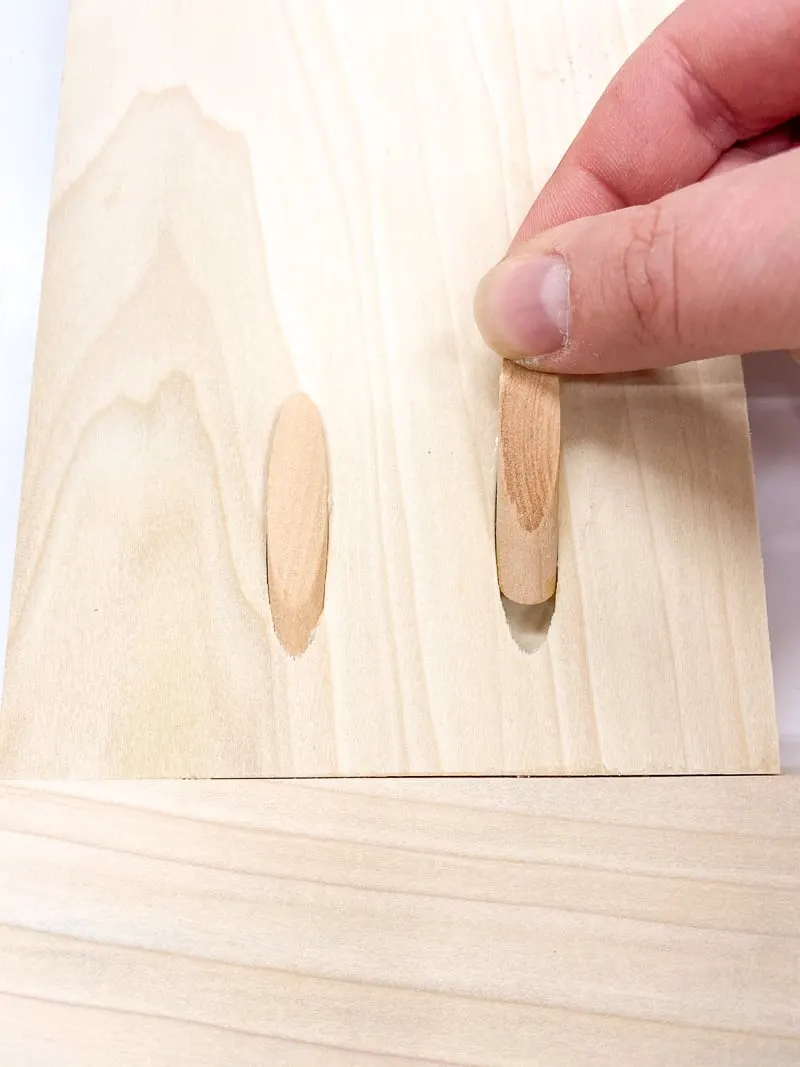
When you use store bought plugs, all you need is to squeeze some wood glue into the hole and then slide the plug into place. You may need to use a rasp to grip the top of the plug – this will give you some extra oomph to get it seated properly.
Once the glue is dry, cut off the excess with a flush cut saw and sand everything down smooth. Here's a video showing you how to fill a pocket hole with a pocket hole plug.
One downside to factory wood plugs is that they aren't always a perfect fit. If the plugs are too loose, there will be ugly gaps that need to be covered up with wood filler. They can also be a little pricey, and may not match your wood species exactly.
Using Bondo to Fill Pocket Holes
When we think of Bondo, we usually imagine auto body repair, not woodworking. However, this stuff works well for filling pocket holes. It usually dries a white or greyish color, so it's best to use this method with paint.
It's a two part product, so make sure you mix both components together well before applying. This video shows how to use Bondo to fill holes in wood.
Bondo gives a smooth finish, without the graininess you can sometimes find with wood filler. So, if you're painting, this method can make your pocket holes disappear!
Pocket Hole Plug Cutter
A pocket hole plug cutter is a genius jig woodworkers use to make their own plugs out of different wood species. This is helpful for a couple of reasons...
First, you don't need to buy any more pocket hole plugs, as you can make them from scrap wood. If you make the plug from the offcuts of your project, they'll blend into the surrounding wood and become almost invisible!
Second, you can customize the plug based on size and grain patterns. Taking a bit of time to match the grain lines will make your pocket hole disappear!
Here's a video that shows you how to use the Kreg pocket hole plug cutter. As you'll see, you can make a lot of pocket hole plugs in no time at all!
However, if you're a little hesitant about investing in a plug cutting bit, there's another method that may draw your interest.
Wooden Dowels
The dowel method allows you to make your own pocket hole plugs on a budget - and still get great results. Now, to be fair, it's not that expensive to buy a bag of plugs. However, the dowel method is cheaper, and many people feel it gives them the best fit.
Here's how it works.
First, you choose a dowel rod with the same diameter as the hole for your pocket jig. You want it to be a little bit tight, so you get a snug fit.
Then, all you do is tap the rod down into the pocket hole, using a bit of wood glue to secure it. Finally, you cut the dowel even with the surface of the board using a flush cut saw. Easy!
Here's a video that shows the dowel method to plug pocket holes.
While this method allows you to make a ton of pocket hole plugs cheaply, it doesn't give you the same ability to customize or match the grain patterns. Still, it's a pretty sweet option for those who don't want to mess with factory plugs!
Glue and Sawdust Wood Filler
Here's another improvised option using some of the most common items in the workshop: sawdust and wood glue!
After sanding your project, empty the dust bag onto a scrap of wood. Mix it with regular PVA wood glue until it creates a thick consistency. Then spread it over the pocket hole, just like wood filler. Once it's dry, sand it smooth.
Keep in mind that you should be using fine sawdust, not larger chips. It's best to use sawdust from the project you're currently working on, so the colors match. Plan ahead and empty out the dust bag before you start sanding, so the only material left is from the boards you're working on.
Check out this article for more clever uses for sawdust!
Plastic Pocket Hole Caps
Plastic caps work similarly to wooden plugs. However, they're even faster to use and require no sanding, cutting, gluing, or painting. These plugs are best used when you might need to take your project apart at a later date.
Plastic pocket hole caps sit in place and can be painted. However, you can pop them out and then remove the screws!
This option is more visible than the other methods, but works great for materials like melamine that shouldn't be sanded. They can be hard to find in colors other than white, but black and brown are also available.
Final Thoughts about Filling Pocket Holes
Here are several things to keep in mind when deciding which method you should use.
The fastest way to fill a pocket hole: If you don't want to wait for glue to dry, the best thing you could do is to use plastic pocket hole plug caps. These will cover up the screw heads and will give you access to them later.
Best way to fill pocket holes for stain: If you want your pocket holes to hide in plain sight, then using a custom plug cutter is probably your best option. With a little effort, you can get a near-perfect match between the plug and the wood grain!
Cheapest method for filling pocket holes: If you already have a pocket hole plug drill bit, making your own out of scrap wood is the least expensive option. But both the dowel rod method and wood filler will only cost you a few dollars.


